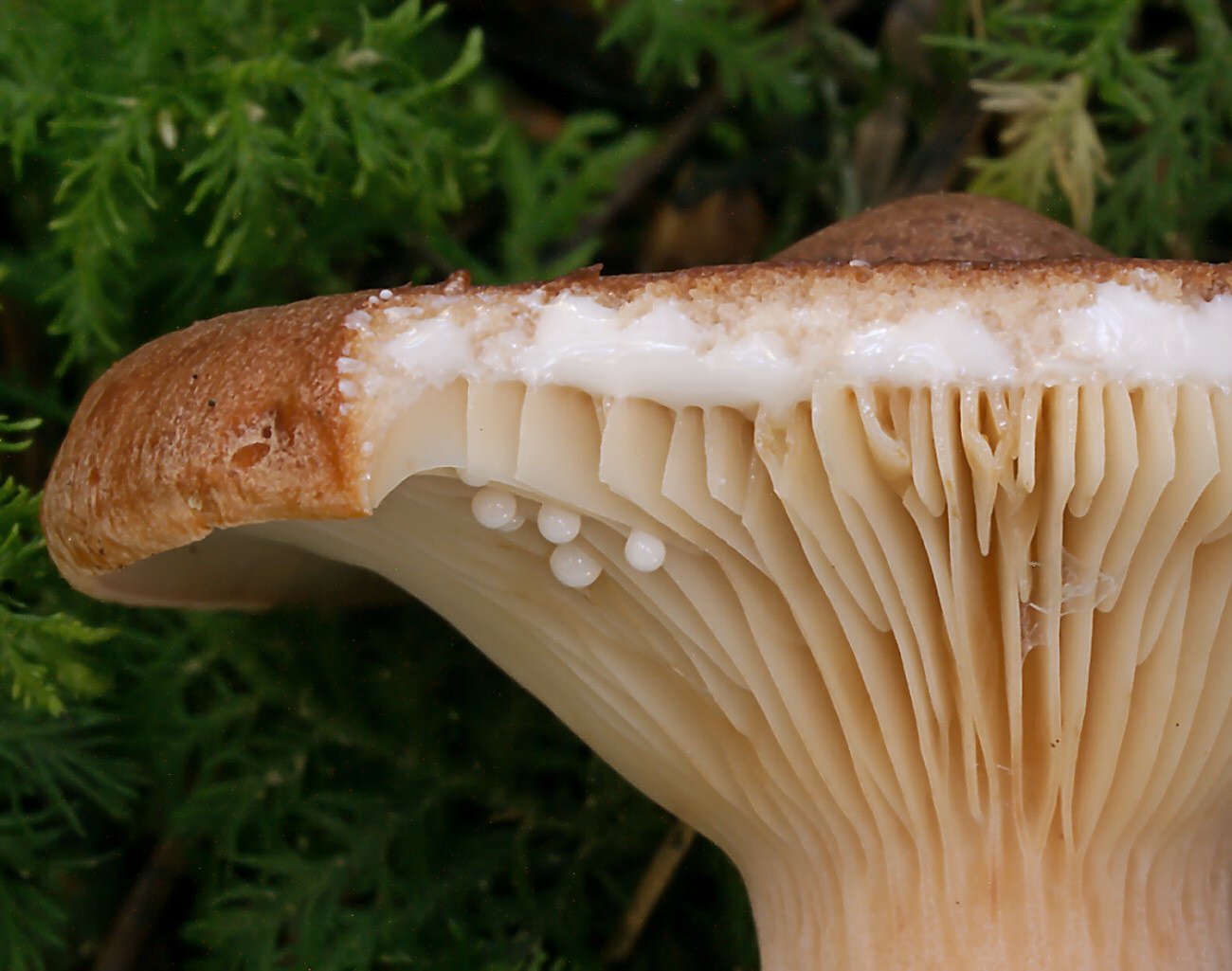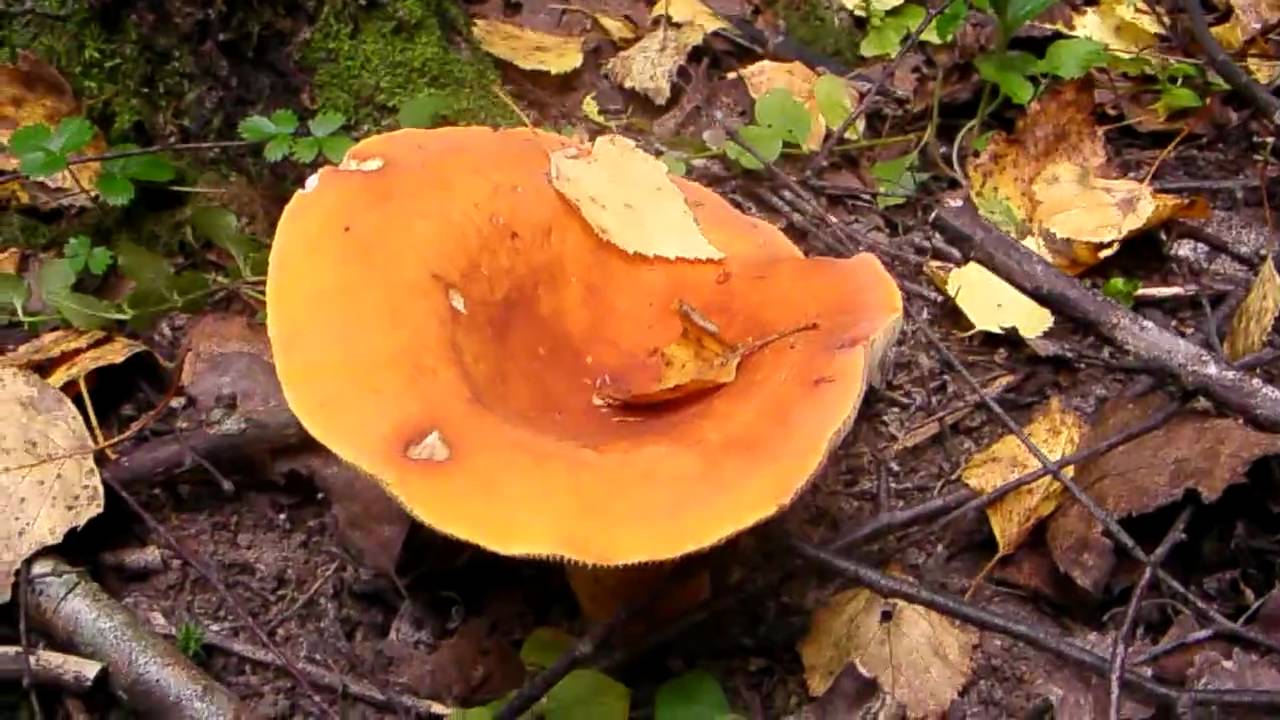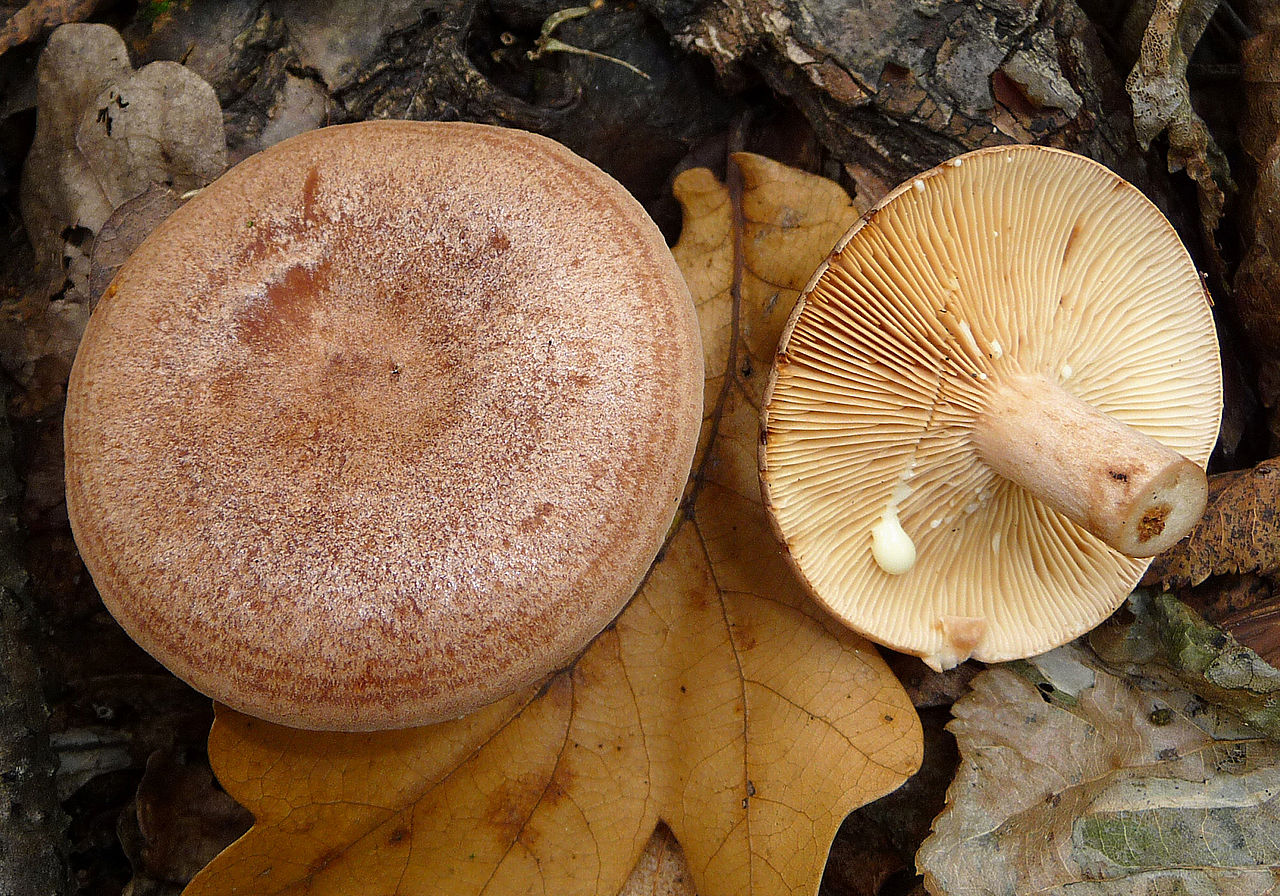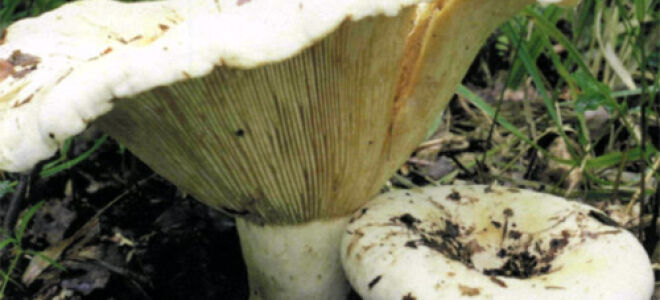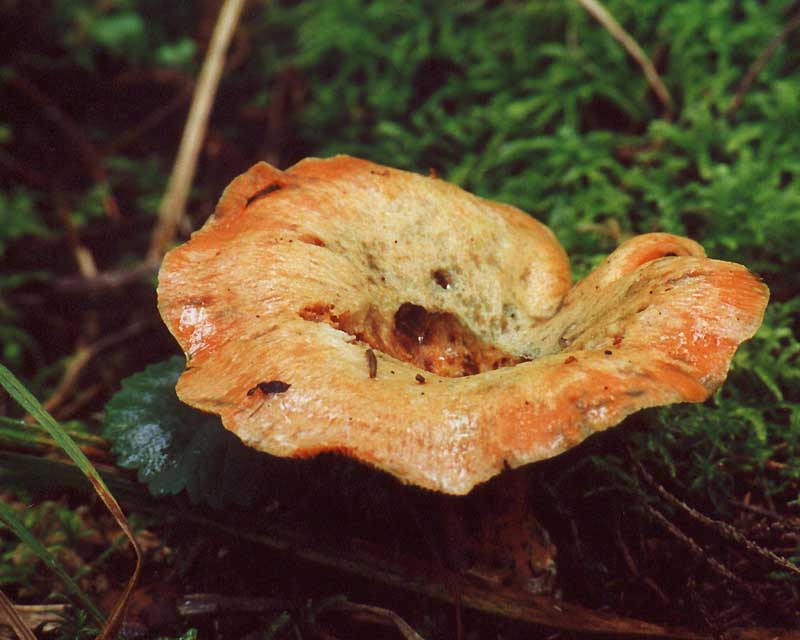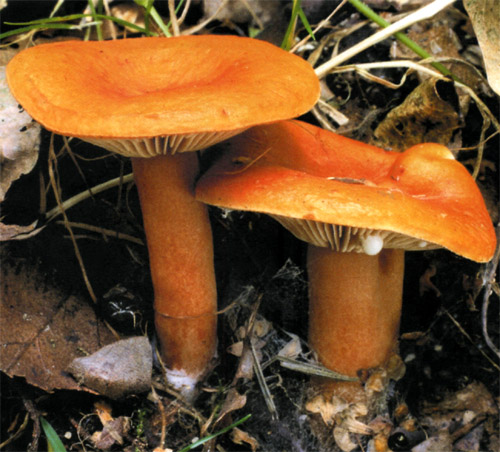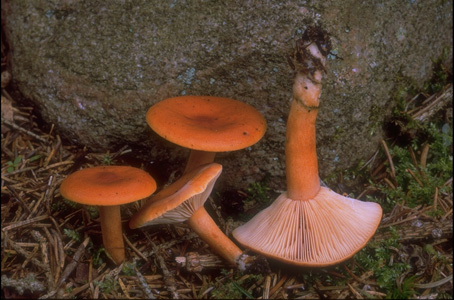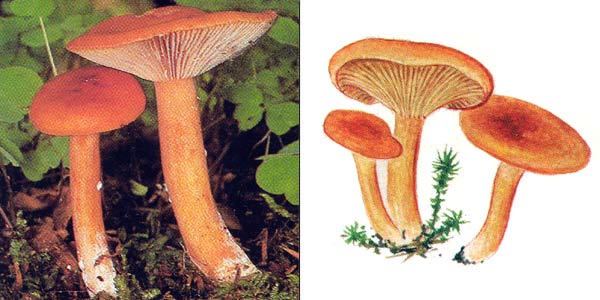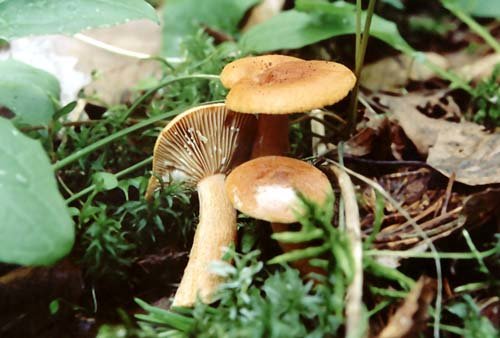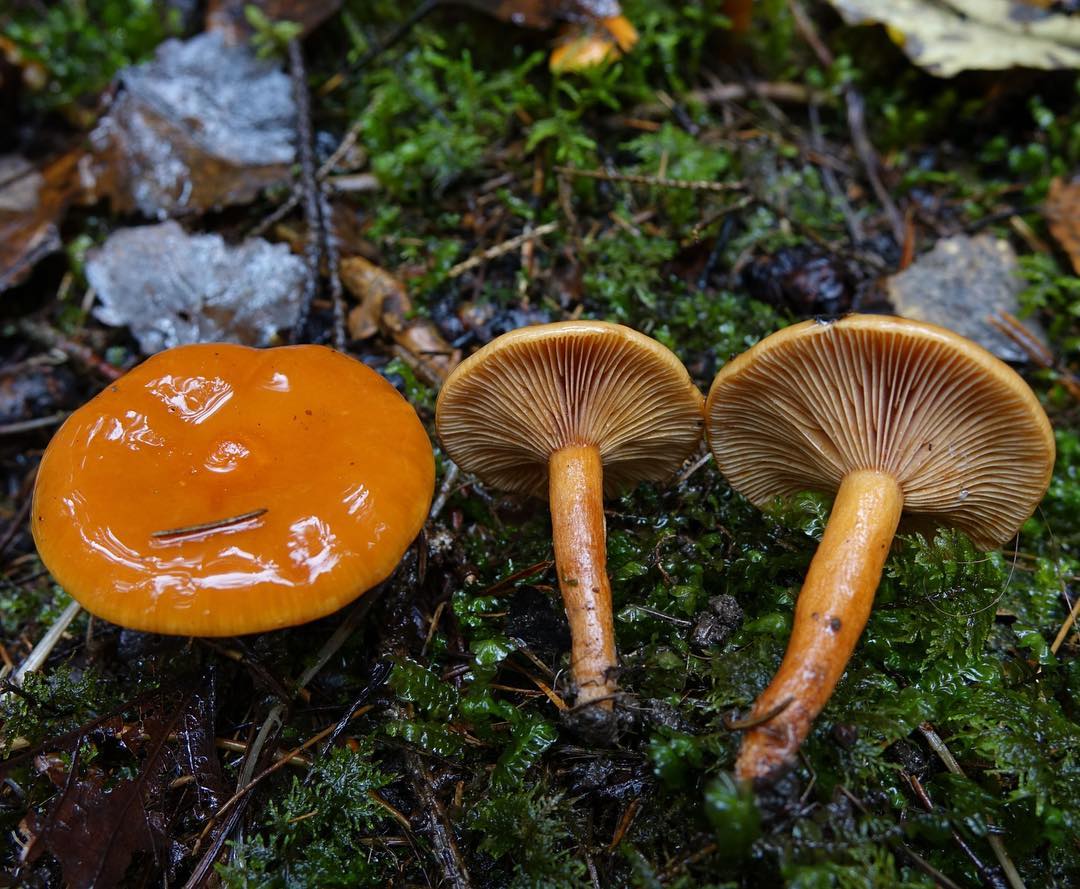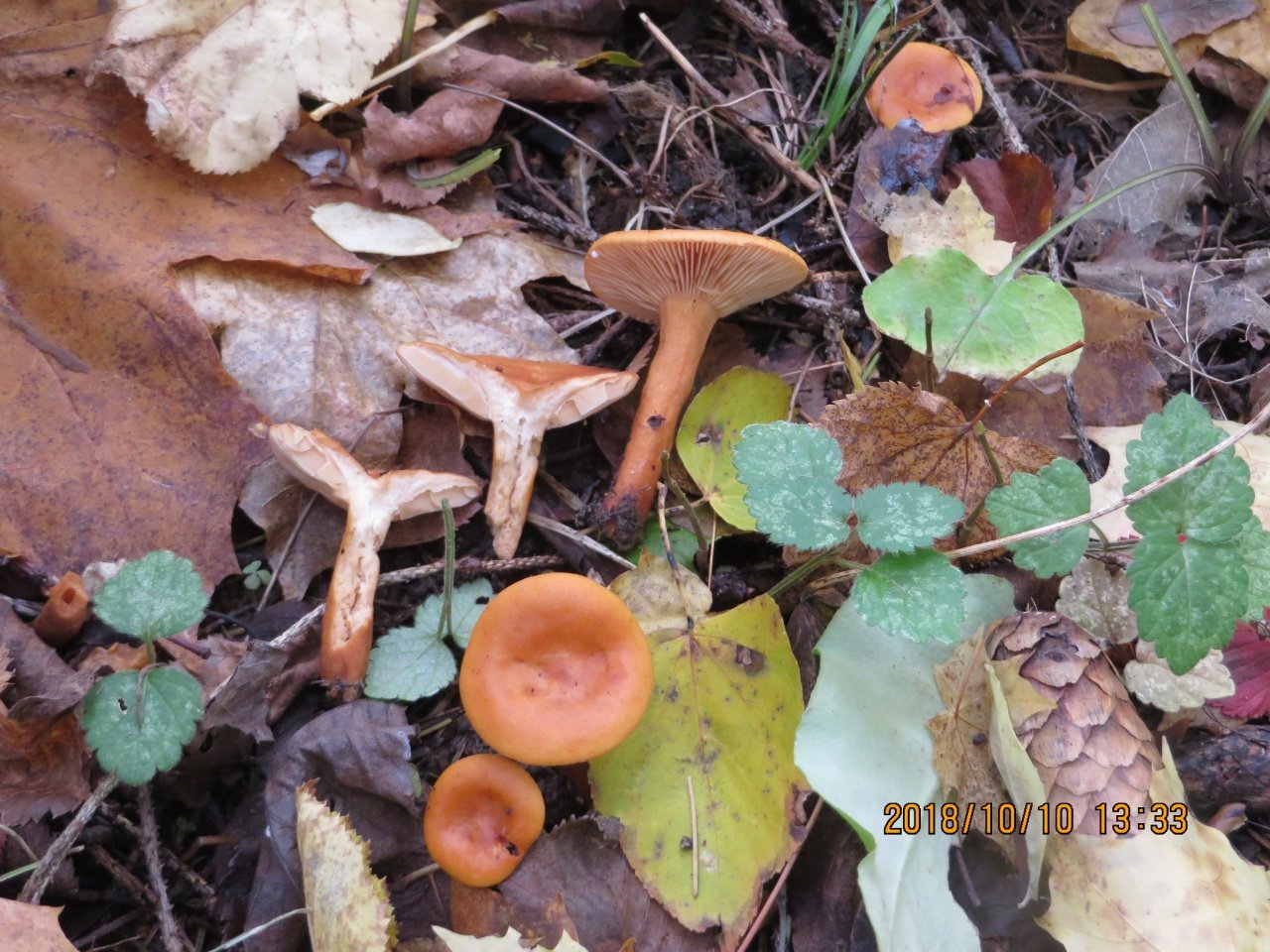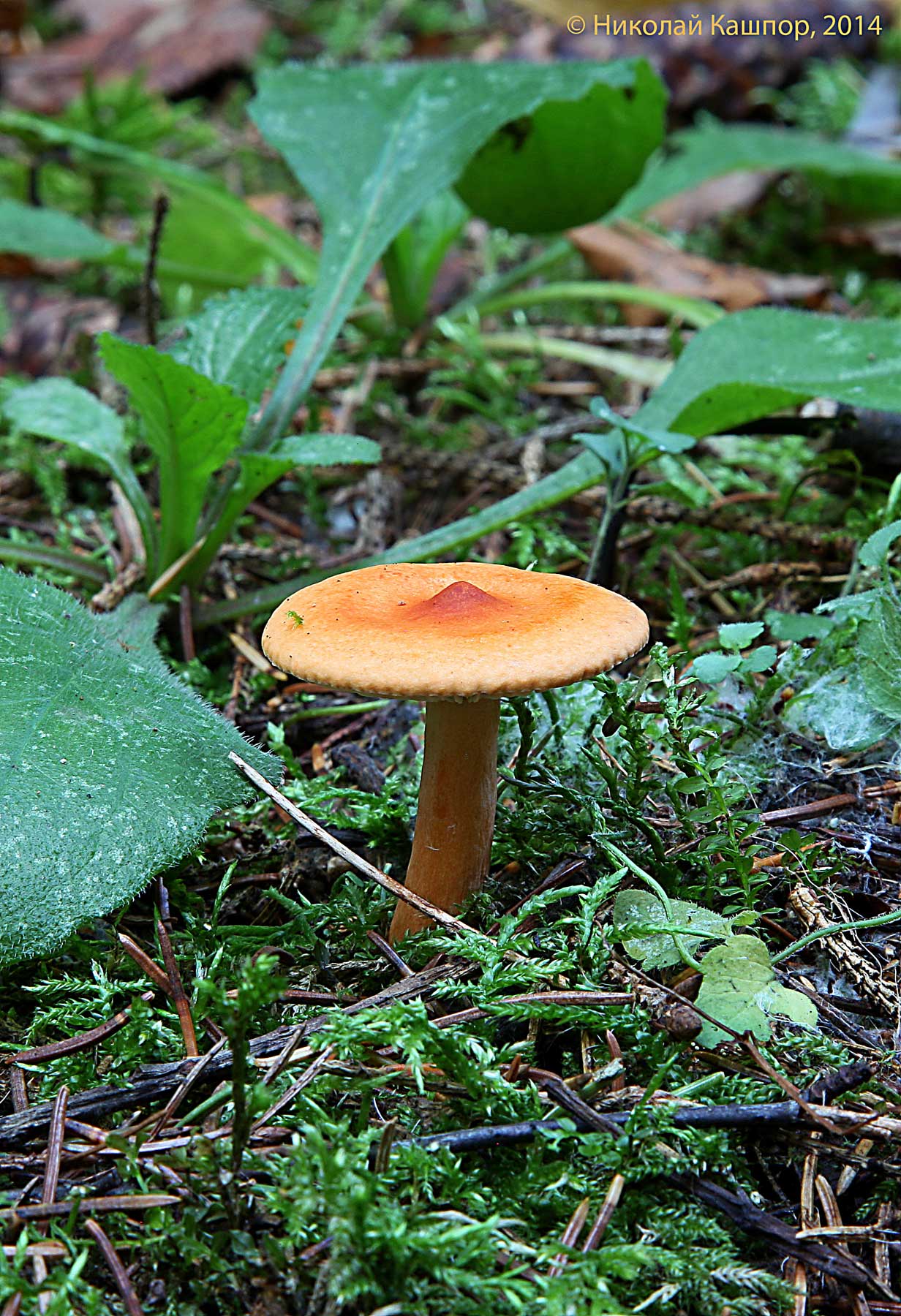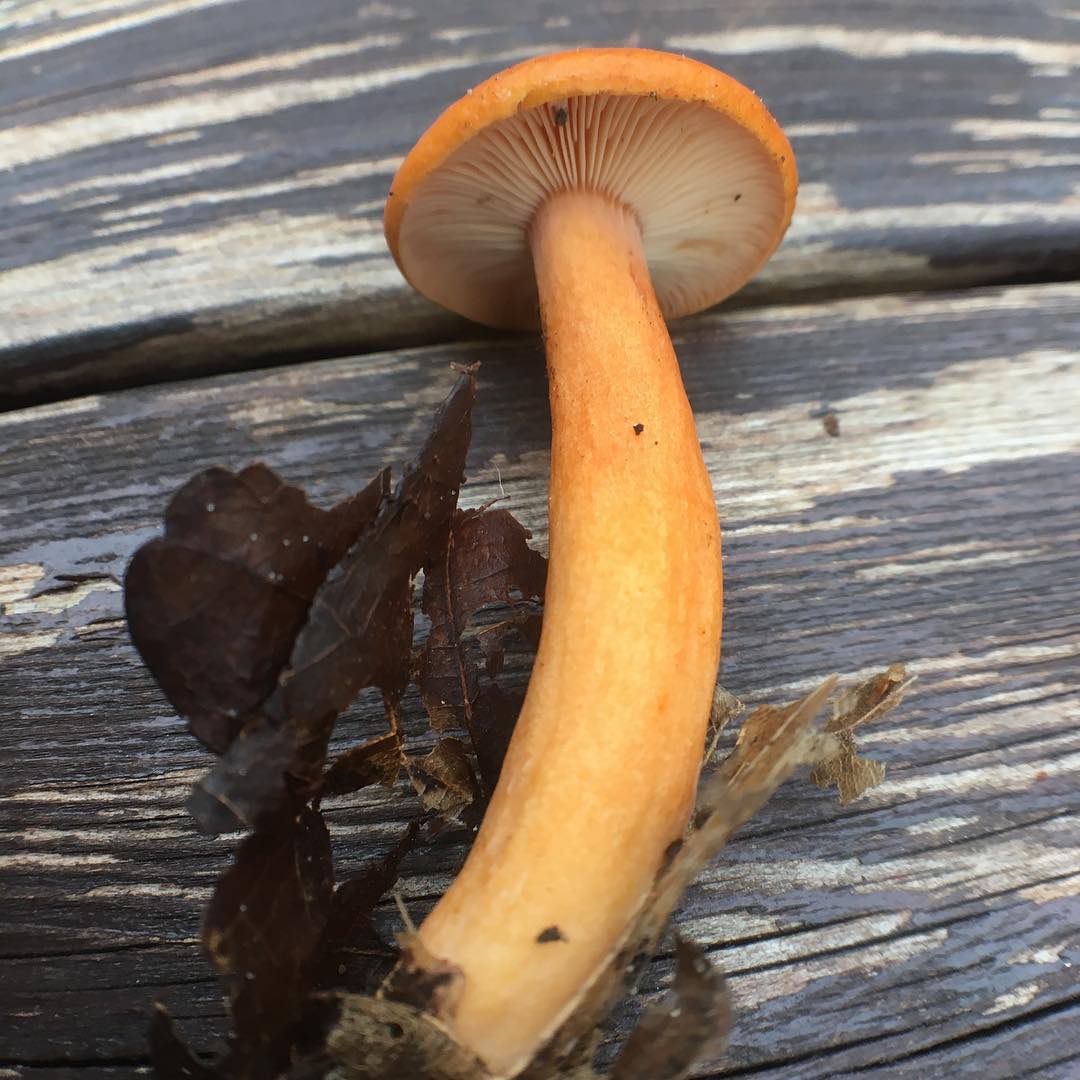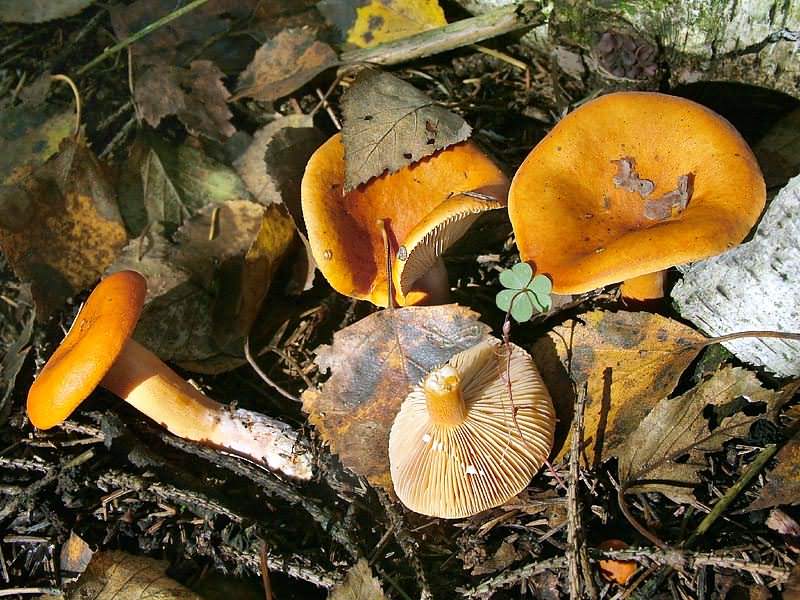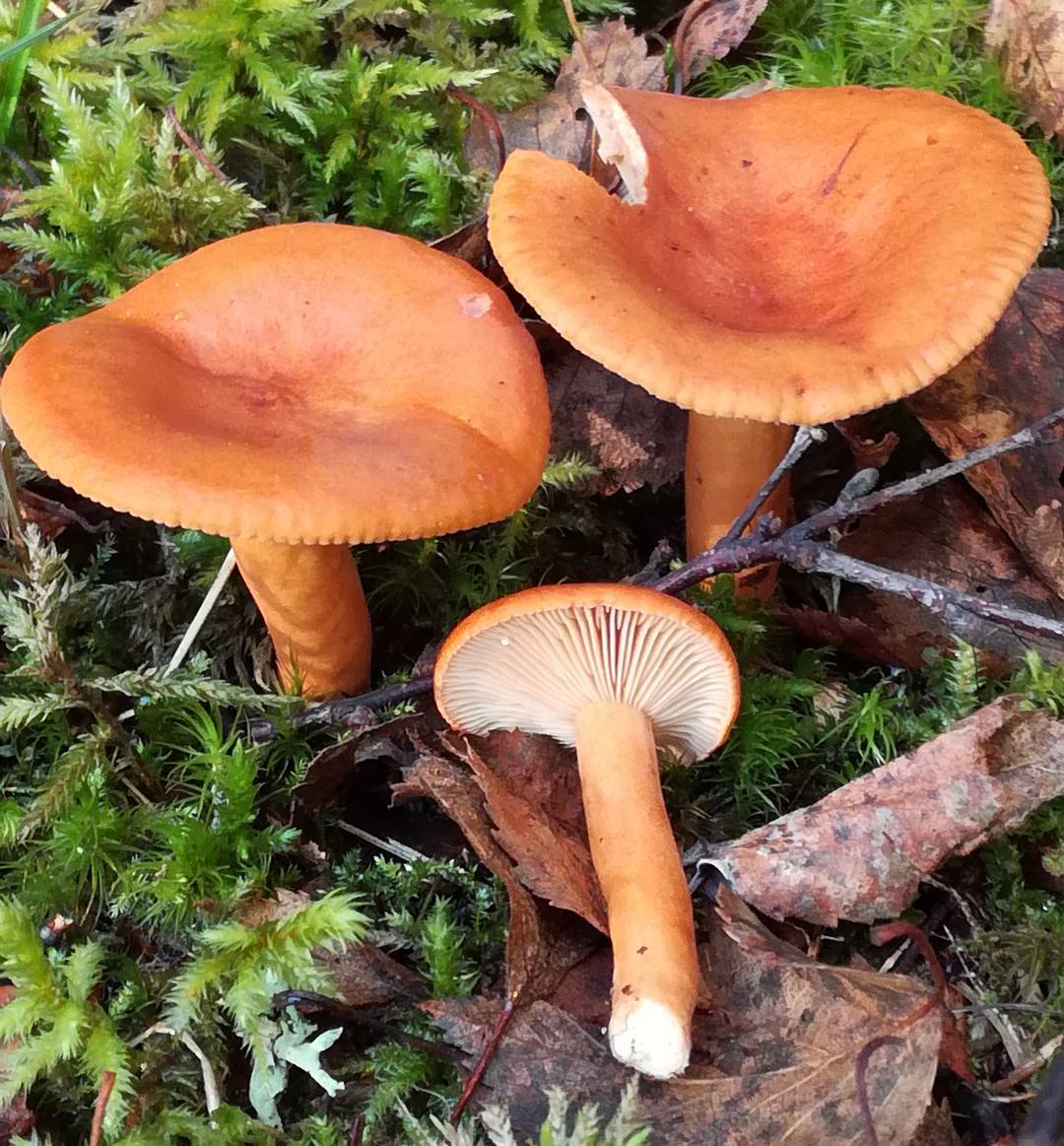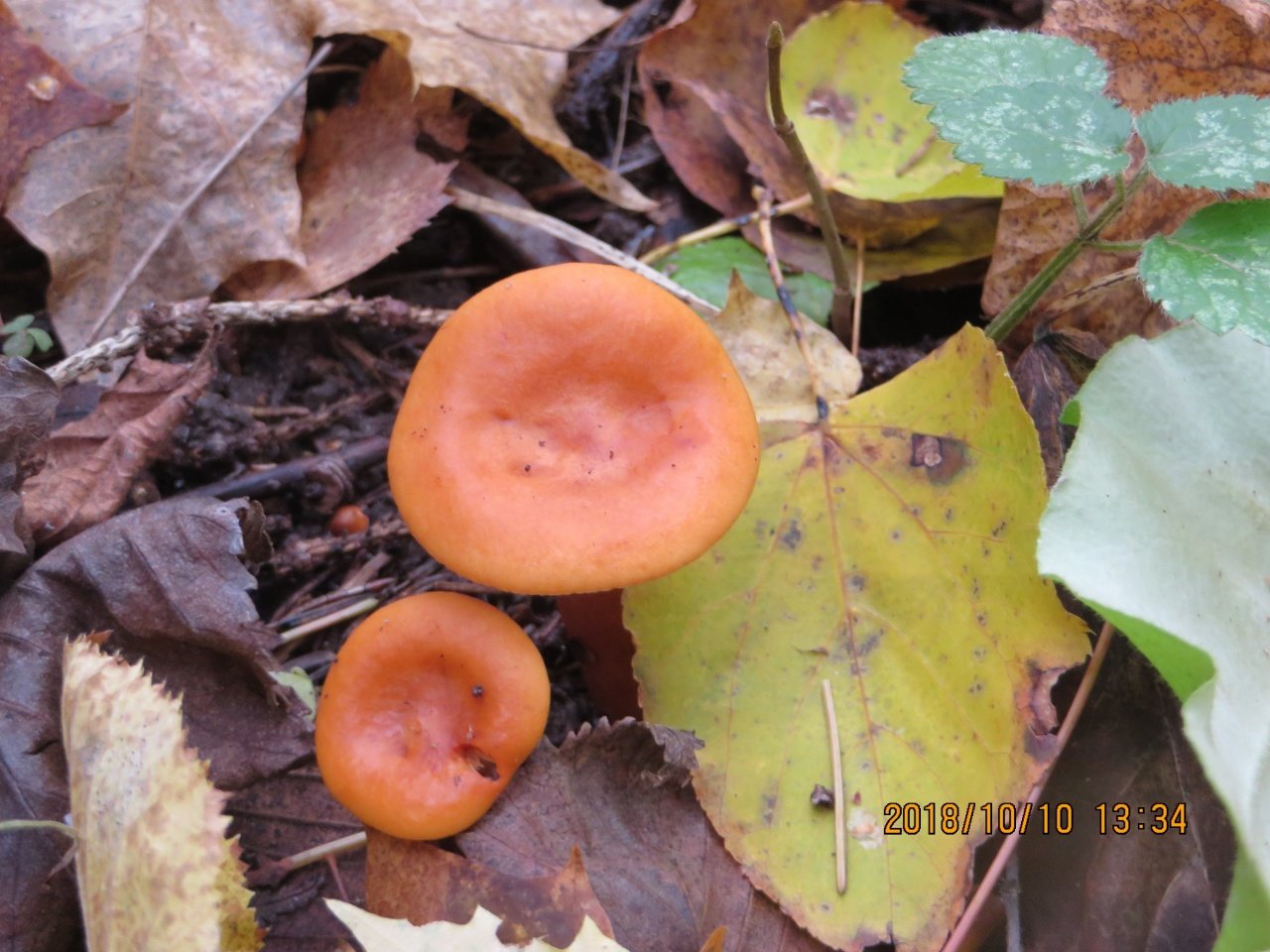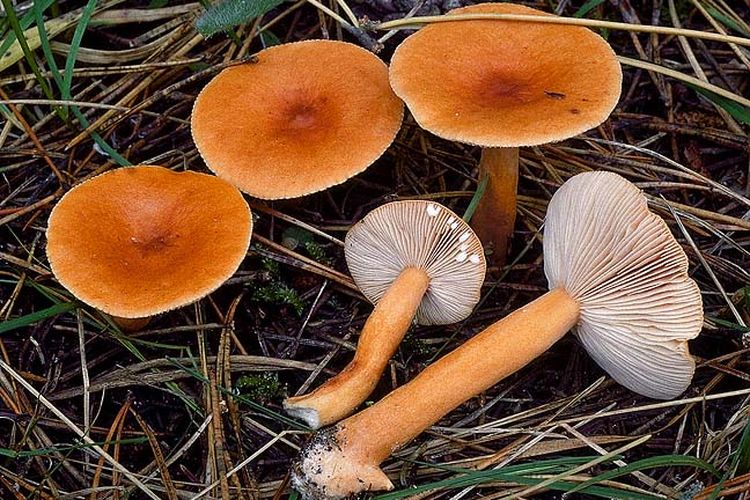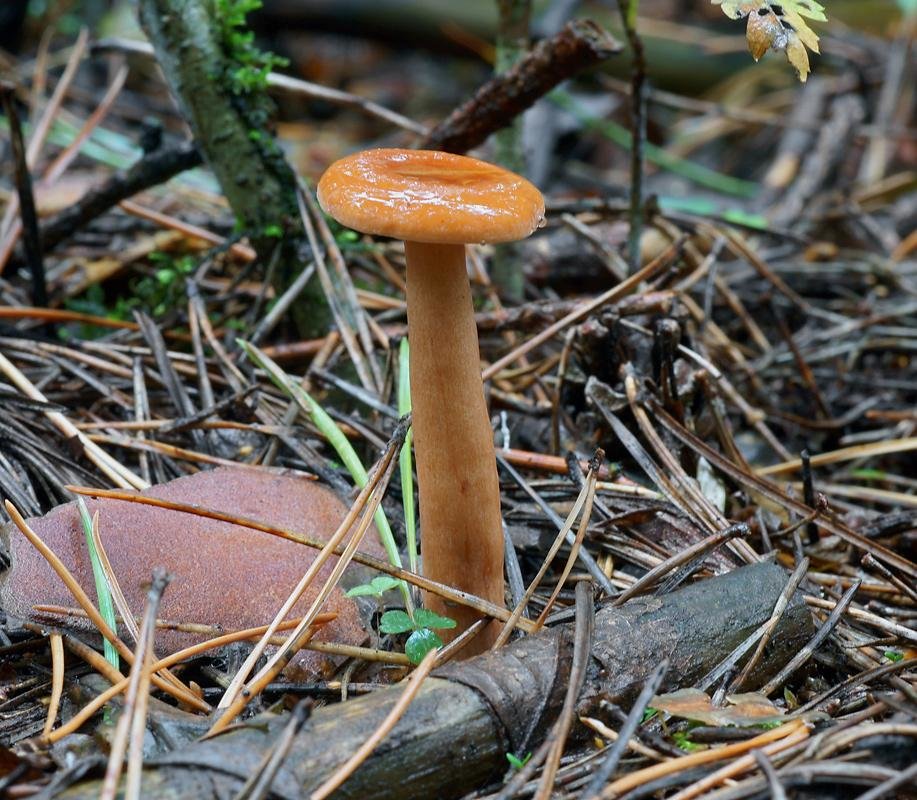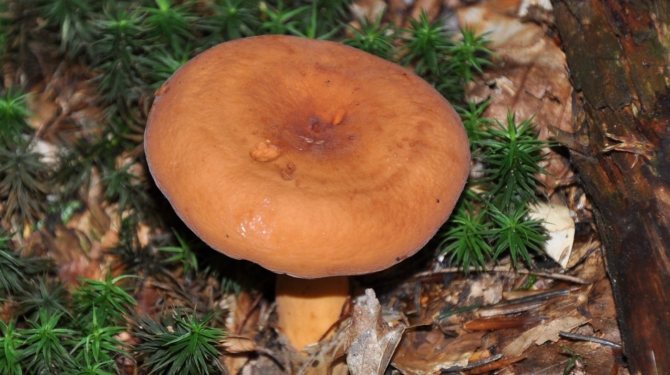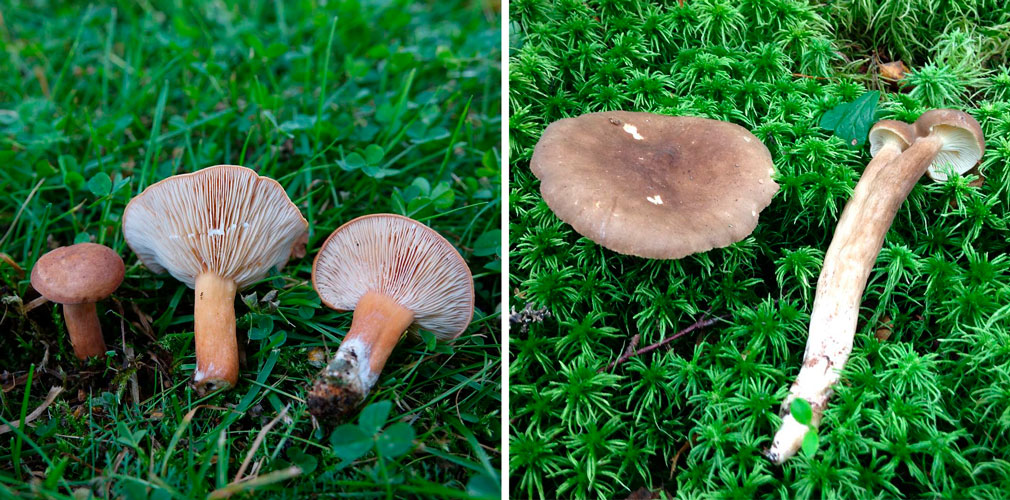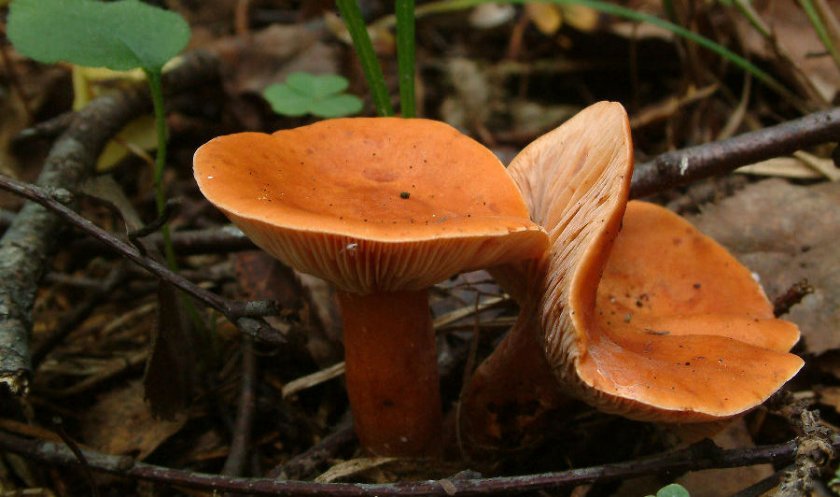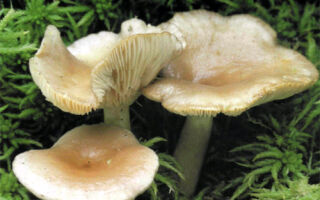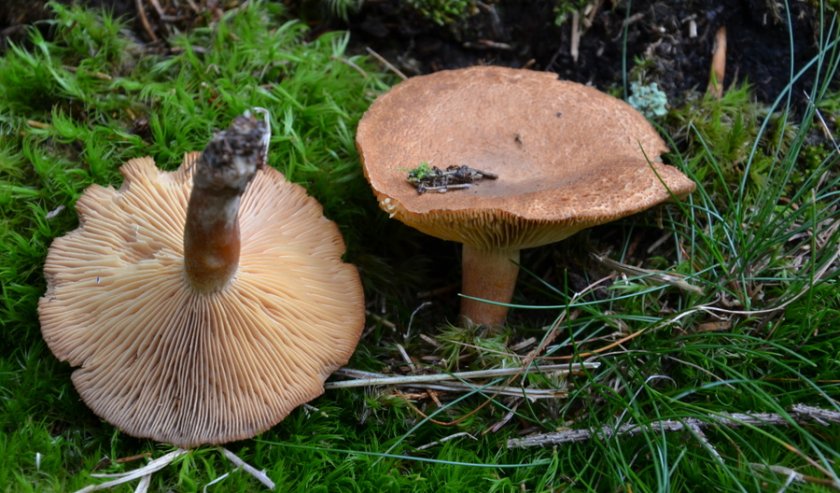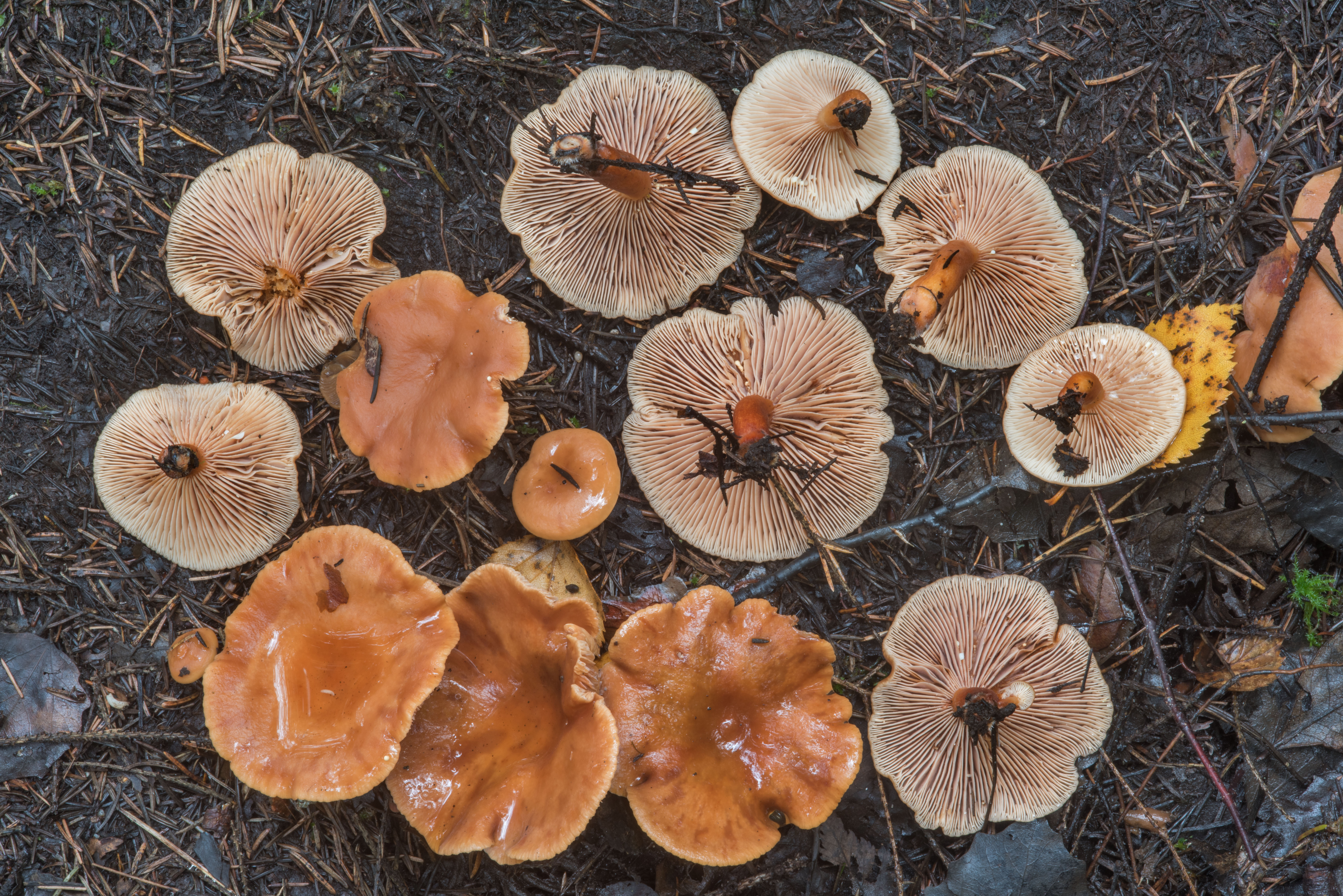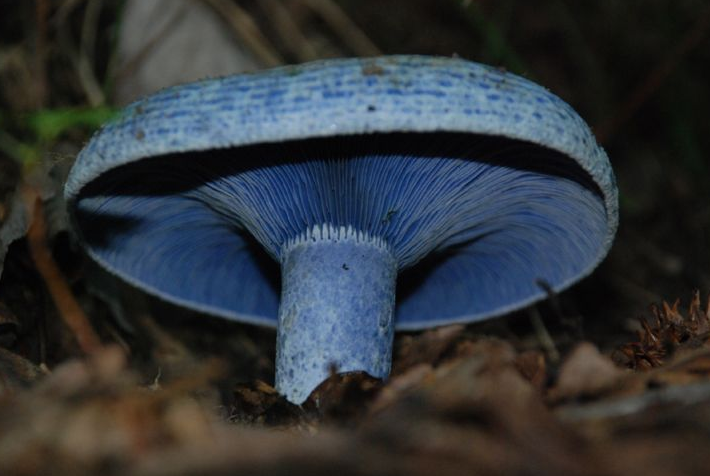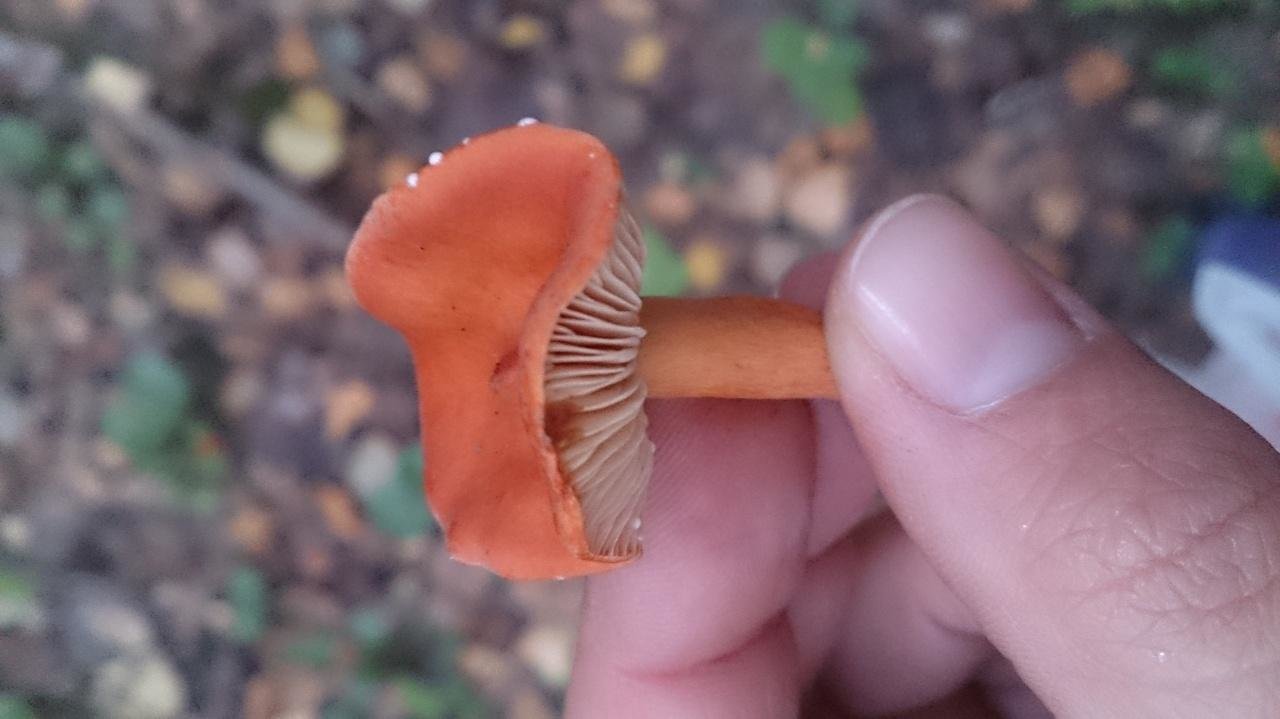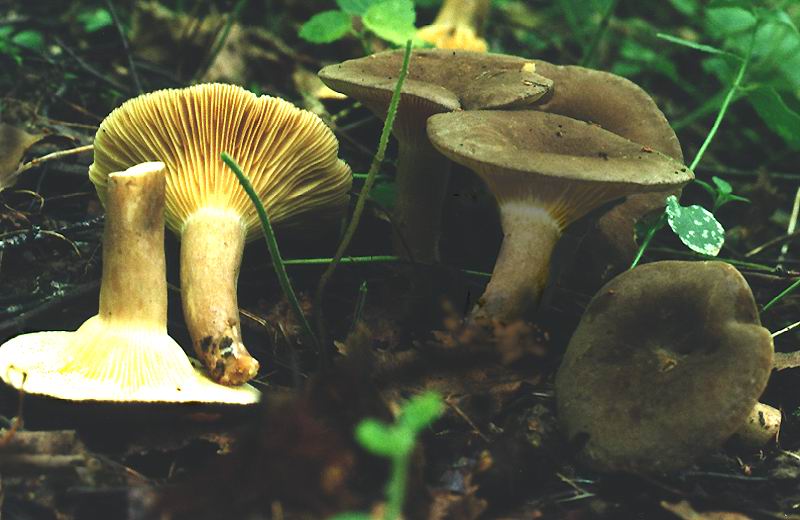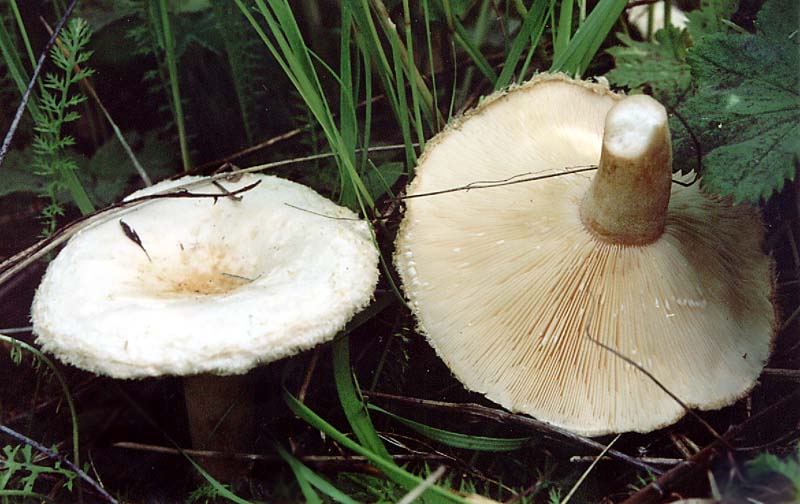Description and photo of Bitter
As mentioned above, many mushroom pickers prefer to bypass the bitter side. And all because it is incredibly similar to a toadstool. However, it seems so only at first glance, if you do not know the nuances of the structure of the mushroom. Let's find out how to distinguish a bitter from other representatives of the forest. Indeed, in fact, it is not as difficult as it might seem at first glance. Common names: Red Bitter, Bitter Milk, Gorchak, Goryanka, Putik, Sukharka.
Hat
Bitter is a striking representative of the forest, and naturally, it is easy to spot it in the forest thicket. This mushroom has a very remarkable head. If you look at it carefully, you can see that it is bright enough. Most often it has shades of orange, brown or brown. In fact, it all depends on the soil in which the mushroom grows. If it is acidic, the mushroom becomes darker, if it is limestone, the cap of the mushroom is rather light.
As for the size of the cap, it can reach a maximum of 15 cm in diameter.However, most often there are specimens that are not so impressive in size. Average approximately 10, maximum 12 cm in diameter.
The hat is quite fleshy, if you touch it with both hands, you will feel elasticity and full of pulp. The hat smells pleasantly of mushroom champignon and other pleasant bouquet of aromas.
As for the skin of this forest dweller, it is quite dry and slightly slimy. However, if the mushroom does not grow in the shade, but prefers forest edges or clearings, then the cap becomes completely dry and cracks.
In general, the bitter has an umbrella-shaped hat with a pronounced dome. However, with age, its edges begin to rise, as a result of an uneven rise, the pulp begins to crack, and the mushroom does not look very presentable. Flies begin to settle inside.
However, this happens quite rarely and only under the direct influence of sunlight.
Leg
The stem of this mushroom is rather thin relative to the cap. And she hardly holds such a weighty mushroom. In length, it reaches about 8 cm. In diameter it rarely reaches 2 cm, usually from one to one and a half. The stalk is usually lighter than the cap, however, if the soil is very acidic, the stalk becomes darker.
It thickens slightly closer to the mycelium. With age, the leg becomes almost hollow, it can hardly withstand the cap. However, at a young age, it is very elastic and no less tasty. It also gives off a very pleasant smell.
Pulp
As for the pulp, it has a white tint, but when it interacts with oxygen, it quickly darkens and becomes beige and even orange. If you make a cut, then flies and other insects will quickly fly to the smell, because a bitter for them is a favorite delicacy.
If you look under the hat, you can see very thin white and pink plates. Also, over time, these plates can also acquire a brown color. It is believed that the standard size of such plates is quite thin, however, depending on the nuances of growth, the plates can become wide. Spores of olive shade and spore powder are hidden there.
The mildness is bitter on the palate, but with proper home processing, it will become truly tasty, aromatic and nutritious.
Raw mushroom tastes hot, like you tasted pepper. Also, the pulp on the cut gives a milky white juice, and the smell is similar to wood.
Growth calendar
When should you go looking for a bitter taste?
In fact, this mushroom has a very clear framework for growth and development. It is believed that the bitter begins to grow actively from June, when a bright and active sun appears and is already warm enough.However, as it grows and develops, the bitter has a fairly large seasonality. It is believed that from June it grows to mid-September, after which this mushroom stops actively growing and begins to dry out.
However, if the spring is very warm, then the bitter can begin to grow from May.
The same applies to warm autumn, with a favorable development of events, the bitter can grow until the end of October.
It is believed that the optimal time to harvest this mushroom is from mid-August to mid-September. Then the mushrooms are already gaining their strength, have the best possible characteristics in terms of quality and composition. The same goes for taste characteristics. Therefore, you should go on a mushroom hunt at this time.
General characteristics of lactic mushrooms
The fruiting bodies of any lactarius are represented by a cap and, as a rule, a centrally located leg, in the absence of a cover. Some varieties are characterized by stocky fruiting bodies and rather thick legs. Other species form fruiting bodies, represented by a leg and a medium-sized cap. A significant part of the lactarius has a hymnocarp type of formation of fruit chalk.
Young specimens have a cap with edges that fit tightly to the stem, which straighten out over time and the upper part acquires a flat, flat-concave or funnel-shaped shape. The coloring of the cap surface is quite varied:
- white;
- yellowish;
- orange;
- brown or brown;
- grayish;
- purple or pinkish;
- bluish;
- olive black.
It should be noted that some types of milkmen are characterized by a change in coloration with age. The surface is smooth, velvety, with roughness or scales, and also covered with hairs. The plates are weakly descending or attached to a cylindrical or narrowed, widened at the base or clavate stem, which, as a rule, has the same coloration as the cap. Spore powder is most often light yellow, whitish blue or any other pale, beige color.
How to cook properly
Euphorbia is great for pickling and pickling - it belongs to the fourth or third flavor category, so you should not eat it fried, stewed or boiled.
Before cooking, the mushroom does not need to be soaked, because it is not damaged by insects and does not have high acidity.
It is better not to use old mushrooms due to the strong smell and poor taste.
1 recipe
Mushrooms are delicious when salted
The simplest and most common cooking method is cold salting.
The collected fruit bodies are simply washed with cool water, and then they are laid out in layers in a wooden tub or barrel.
Each layer is sprinkled with coarse salt at the rate of 50 g per 1 kg of milkweed. When all the mushrooms are laid in layers, cover the surface of the last layer with gauze, on it - a wooden circle that matches the size (diameter) of the container and place the load on it. Leave in the cold for a month.
2 recipe
Some chefs prepare mushroom cream soup.
The algorithm of actions is simple: 200 g of butter are melted in a frying pan with half rings of onions until the latter acquires a golden color and a characteristic smell.
Next, 800 g of fruit bodies are fried with onions and oil for 15 minutes. In parallel with this, salt and ground pepper are poured into a saucepan with water.
When the contents boil, pour the food from the pan. After 5 minutes of boiling, 600 ml of milk with a high proportion of fat or heavy cream is poured into the container. On a note. The cream in the cream soup works better - it makes the taste "silky". After that, gradually, with stirring (to prevent the occurrence of lumps), 3 tbsp is poured out. flour.
Once the mixture is cooked, it can be given a little “rest” and mashed in a blender. This mushroom cream soup can be served with black bread, croutons or a finely chopped mix of fresh herbs.
Mushroom common lactarius and its photo
Category: conditionally edible.
Lactarius trivialis cap (diameter 5-22 cm): shiny even in dry weather, with dark rings. Changes color and shape depending on the age of the fungus: in young mushrooms, it is dark and gray-gray, rather convex; in old ones, purple and brown, and then ocher or yellow, flatter and even depressed. Dense, maybe with small dimples. The edges are wavy, curved, often curled inward.
Stem (height 4-10 cm): pale gray or light ocher, cylindrical, sometimes swollen, but always hollow. A bit slimy and sticky.
Pay attention to the photo of an ordinary milkman: its plates are frequent, thin (occasionally wide), mostly yellow or cream in color, with rusty spots. Pulp: thick and fragile
Mostly white, but brownish under the skin itself, and red at the base. Milky sap is very bitter; when interacting with air, it changes color to yellow or slightly greenish. Has a peculiar smell reminiscent of fishy
Flesh: thick and fragile. Mostly white, but brownish under the skin itself, and red at the base. Milky sap is very bitter; when interacting with air, it changes color to yellow or slightly greenish. Has a peculiar smell reminiscent of fishy.
Doubles: none.
When it grows: from mid-July to late September.
Where to find it: In humid places and lowlands of all types of forests, most often near pines, spruces and birches. Hides in dense grass or moss. An ordinary milkman is not afraid of pests.
Eating: fresh or salted, subject to pre-soaking to remove bitterness. When cooking, it changes color to bright yellow or orange. It is very popular in preparations for housewives in Finland.
Application in traditional medicine: not applicable.
Other names: gladysh, alder, nest, yellow nest, gray lump.
Faded milky: photo and application
Category: conditionally edible.
Faded lactarius cap (Lactarius vietus) (diameter 4-9 cm): gray, lilac, lilac or gray-brown, eventually fades to white or grayish. Slightly convex or outstretched. The center is slightly depressed, but with a slight tubercle and usually darker than the edges, which are curved towards the inner side. The surface is often uneven. Sticky and damp to the touch, with sticky twigs or leaves.
As you can see in the photo, the faded lactarius has an even, sometimes slightly curved leg. Its height is 5-9 cm. The color is white or light brown, lighter than the cap. The shape is cylindrical.
Plates: thin, narrow and very frequent. Cream or ocher in color, gray at the point of depression.
Flesh: white or gray, with a pungent milky juice. Thin, very fragile.
Doubles: none.
When it grows: from mid-August to early October.
Where to find: in deciduous and mixed forests, especially near birches. Prefers damp and swampy places.
The use of faded lactarius in cooking is limited - since the flesh of the mushroom is very thin, it is not very popular. Only the largest specimens are salted and pickled.
Application in traditional medicine: not applicable.
Other names: sluggish milky, marsh wave.
Etymology
The Latin name of the genus in translation means "milk", "giving milk".
The people of the most valuable species, such as Lactarius resimus, have been called mushrooms since ancient times. Currently, many species are called mushrooms, including inedible ones (Lactarius helvus - gray-pink milky); in some reference books, such a name is adopted for most species (except for saffron milk caps and wavelets). "Dry milk mushrooms", or podgrudy (podgruzdami), are not called milkmen, but some types of russula (Russula).
The word "pile" comes from the Proto-Slavic * gruzd, which is related to the word "pile". The assumed internal form of the word in this etymology is "growing on a heap, on a heap." According to another version - from the adjective grudge: "Mushroom mushroom" - "fragile, brittle mushroom" (cf. lit. gruzdùs "fragile, brittle"). Another explanation is “mushrooms growing heavy", That is, in a heap, in large groups.
Salting directly
So, you have fully prepared milkcap mushrooms. How to salt is a separate song, although not too difficult to perform. In the absence of a tub, it is recommended to use an enameled bucket without chips on the inner surface.
Large caps can be cut - purely for ease of use. Mushrooms are layered with halved garlic (about the head will go away), thin circles of horseradish root, lemongrass and black currant leaves, dill seeds (or its umbrellas). Black peppercorns are also acceptable, but not too much. Each layer is sprinkled with a coffee spoon of salt. The top of the bucket is closed with clean gauze, a wide plate and a load are placed on it - a three-liter bottle of water will be enough. Monitor the condition vigilantly: if mold forms on the gauze, it must be washed. And it is better to replace it with a new one, it is not so expensive.
The milkmaids will be salted from a couple of weeks to a month, depending on the temperature. The warmer - the faster, the colder - the tastier. It is better to keep them cool, and use them like any other salted mushrooms.
Description and photo of rubella
How to understand that in the forest in front of you is a rubella or, as it is called, a sweet milk mushroom? To do this, you need to know exactly what this mushroom might look like. However, there are several nuances. Depending on the type of soil, a forest dweller may have slightly different characteristics than those described in the reference books. Therefore, we will consider several options at once for how a rubella may look. Synonyms - Sweetish Milk, Sweet Milk, Poputa.
Hat
The first thing that the mushroom picker looks at is, of course, a hat. In young mushrooms, it is rather convex and has the shape of an umbrella. However, with age, the edges begin to rise unevenly. Because of this, the cap begins to tear at the edges, and the flesh darkens when it interacts with oxygen.
However, from this it does not cease to be edible. The diameter of the cap reaches 8 cm. However, in calcareous soils, which are incredibly useful for this fungus, the cap can grow up to 12 cm. With age, when the edges of the cap rise, they even begin to bend slightly inward.
The color of the fungus can be either dark red or bright yellow, depending on the composition of the soil. If you try the hat, you will realize that it is quite fleshy and elastic, and your fingers literally fall into it. A pleasant mushroom aroma comes from the cap, which speaks of edibility.
Leg
Such a fleshy and dense cap rests on a rather thin leg, the length of which reaches 10 cm. It is cylindrical, compacted to the base.
A characteristic feature that makes it possible to distinguish the rubella from any other mushrooms is that its stem is much lighter than the color of the cap. And this always happens, regardless of the soil where the mushroom grows.
With age, the leg ceases to be so stable and dense, it becomes empty inside and hardly holds the cap back. Therefore, very often in the forests you can find a situation when the leg broke under the weight and weight of the cap and therefore the mushroom dries quickly.
Pulp
As we said above, the flesh of this mushroom is quite dense. However, it should be noted that it is also very elastic. If you cut the cap of the mushroom in half, you will see white juice coming out of the pulp. The pulp itself is white, but when interacting with oxygen, it begins to darken constantly, until it becomes completely brown.
If the rubella is overripe, then a somewhat unpleasant smell of rot begins to emanate from it. The pulp inside becomes quite fragile in structure and at the same time loose. This means that it is better not to take such a mushroom for food.
If you look under the hat, you can see the neatly arranged plates. The fact is that rubella is a lamellar mushroom. The plates are neatly concentrated at the very bottom of the cap, they are located quite often. Their color at the beginning of growth is white, and then turns dark yellow.
Growth time
The sweet lump chooses the time to grow from mid-June to about the end of September. The mushroom is thermophilic, so if the beginning of summer turned out to be cold, it begins to ripen much later. If the autumn is warm, then the lump will delight you until the very end of October.
He loves the sun's rays, but not direct, therefore, in warm meadows, where the light of the sun breaks through the grass and grows very actively. But when direct sunlight hits the cap, it begins to crack. Moisture appears in the cracks, insects rush there. It is no longer possible to collect such a mushroom.
Miller is also very dependent on moisture, so he loves places along forest lakes, rivers, and even sometimes settles along swamps. In general, the mushroom has its own requirements for the conditions of growth and development. However, it can be called unpretentious, since it adapts to the conditions in which it grows significantly.
The benefits of lactic acid for the human body
In our country, many milkmen are considered first-class mushrooms, widely used in salting and pickling. This processing option causes a fairly rapid fermentation of the pulp of the fruit bodies, so the smoothies acquire a very characteristic and pleasant taste. Among other things, meatiness is very highly valued, therefore, after preliminary preparation, the fruit bodies can be used in the preparation of all kinds of mushroom dishes. The use of milkmen has a very beneficial effect on the human body and contributes to:
- strengthening the immune system and blood vessels;
- improving vision in old age;
- strengthening the heart muscle;
- fast tissue regeneration;
- preserving the youthfulness of the skin;
- strengthening hair and nail plates;
- improving metabolic processes;
- restoration of hematopoietic organs;
- improving brain activity;
- balance of water and salt metabolism;
- strengthening of the musculoskeletal system.
Also read: Types of mushrooms growing on a nut: description and characteristics
Conditionally edible
There are slightly fewer conditionally edible varieties, and they are suitable for consumption only after special heat treatment. Depending on the variety, you need to either cook it for a long time, periodically changing the water, or simply soak it in clean water, squeeze it and cook.
The most popular conditionally edible varieties include (Figure 4):
- Milk is a variety with dense pulp, which is quite suitable for human consumption, although in Western countries, milk mushrooms are considered inedible. It is customary to soak them to remove bitterness, and then pickle and pickle.
- The green ryadovka (greenfinch) differs from others in the pronounced green color of the leg and cap, which remains even after heat treatment.
- Morels are conditionally edible specimens with an unusual cap shape and a thick leg. It is recommended to eat them only after thorough heat treatment.
Figure 4. Conditionally edible varieties: 1 - milk mushroom, 2 - greenfinch, 3 - morels
Some types of truffles, russula and fly agaric are also classified as conditionally edible.
But there is one important rule that you should adhere to when collecting any mushrooms, including conditionally edible ones: if you have even small doubts about edibility, it is better to leave the prey in the forest.
Literature
- "Funghi" - Instituto Geografico De Agostini, Novara, Italia, 1997
- Garibova L. V., Sidorova I. I. Mushrooms. Encyclopedia of the Nature of Russia. - M .: 1999.
- F.V. Fedorov, Mushrooms. - M., Rosagropromizdat
- Gorlenko M. V. et al. Mushrooms of the USSR. - M .: 1980
- Bulakh E.M. Lower plants, mushrooms and bryophytes of the Soviet Far East. Mushrooms.. - L.: Nauka, 1990 .-- T. 1. - S. 13-55. - 407 p.- ISBN 5-02-026578-0.
- Gorovoy L.F. Morphogenesis of lamellar fungi. - Kiev: Naukova Dumka, 1990 .-- 166 p. - ISBN 5-12-000791-0.
- Perova N.V., Gorbunova I.A. Macromycetes of the south of Western Siberia. - Novosibirsk: Publishing house of the SB RAS, 2001 .-- 158 p. - ISBN 5-7692-0460-5.
- Shaporova Ya.A. Russular mushrooms of Belarus: Lactarius and Russula (milky and russula). - Minsk: Belarusian Science, 2007 .-- 275 p. - ISBN 978-985-08-0814-1.
- V. I. Shubin Mycorrhizal fungi of the North-West of the European part of the USSR. (Environmental characteristics). - Petrozavodsk: Karelian branch of the USSR Academy of Sciences, 1988 .-- 216 p.
- Basso M. T. Fungi Europaei. - Alassio, Italia: Massimo Candusso, 1999. - Vol. 7 Lactarius Pers. - 844 p. - ISBN 88-87740-00-3.
- Bessette A., Bessette A. R., Harris D. B. Milk Mushrooms of North America. - Syracuse, USA: Syracuse University Press, 2009 .-- 299 p. - ISBN 0-8156-3229-0.
- Funga Nordica / Editors Knudsen H., Vesterholt J .. - Copenhagen, Denmark: Nordsvamp, 2008 .-- 965 p. - ISBN 978-87-983961-3-0.
- Heilmann-Clausen J., Verbeken A., Vesterholt J. Fungi of Northern Europe. - Odense, Denmark: Skive Offset, 1998. - Vol. 2: The genus Lactarius. - 288 p. - ISBN 87-983581-4-6.
- Kränzlin F. Fungi of Switzerland. - Luzern, Switzerland: Verlag Mykologia, 2005. - Vol. 6 Russulaceae. - 318 p. - ISBN 3-85604-260-1.
- Rayner R. W. British fungus flora. Agarics and Boleti. - Oxford, UK: Alden Press LTD, 2005. - Vol. 9 / Russulaceae: Lactarius. - 318 p. - ISBN 1-872291-34-1.
Significance in human life
According to M.V. Vishnevsky, all species of the genus are edible.
In Europe, the overwhelming number of species of the genus Lactarius considered inedible, or even poisonous. In Russia, many species are considered edible, usually in salted or pickled form.
Some lactosers are used in medicine. From this mushroom (Lactarius deliciosus) and close to it red mushroom (Lactarius sanguifluus) with red milky juice, the antibiotic lactarioviolin was isolated, which suppresses the development of many bacteria, including the causative agent of tuberculosis. Pepper milk (Lactarius piperatus) is used in the treatment of kidney and gallstone diseases, blennorrhea, acute purulent conjunctivitis. Bitter (Lactarius rufus) contains an antibiotic substance that adversely affects a number of bacteria, as well as inhibits the growth of cultures of Staphylococcus aureus [source not specified 1412 days].
Pickled shiitake mushrooms, usually grown in China, are often sold under the name "pickled milk mushrooms" and are also edible.
In philately
As of 2015, at least 114 different postage stamps with images of the milkmen have been issued in the world.
Lactarius piperatus on a Moldavian postage stamp (Mi # 694)
Lactarius piperatus on a Romanian postage stamp (Mi # 4290)
- Lactarius blennius - Guinea (Mi # 2523)
- Lactarius camphoratus - Guyana (Mi # 3683), Mauritania (Mi # 1059), Niger (Mi # 1734)
- Lactarius chrysorrheus - Guinea-Bissau (Mi # 3863)
- Lactarius claricolor - Madagascar (Mi # 1632)
- Lactarius deceptivus - Mali (Mi # 1484)
- Lactarius deliciosus - Algeria (Mi # 1013), Angola (Mi # 1421), Bulgaria (Mi # 1267) (Mi # 1275), Botswana (Mi # 318), Guinea (Mi # 762) (Mi # 4255) (Mi # 4681) (Mi # 4741), Guinea-Bissau (Mi # 849), Honduras (Mi # 1845), Spain (Mi # 3143), Cyprus (Mi # 924), Lesotho (Mi # 1317), Liberia (Mi # 4025 ), Mali (Mi # 1480), Mozambique (Mi # 1058), Nicaragua (Mi # 3003), Poland (Mi # 1096), Romania (Mi # 1724) (Mi # 6263), Sao Tome and Principe (Mi # 1631), Saint Vincent and the Grenadines (Mi # 5204), Somalia (Mi # 503), USSR (Mi # 2987), Sierra Leone (Mi # 1078) (Mi # 3723) (Mi # 5215), Togo (Mi # 2355) (Mi # 2818), Turkey (Mi # 3034), Uganda (Mi # 2930), Croatia (Mi # 255), CAR (Mi # 2876)
- Lactarius deterrimus - Afghanistan (Mi # 1845), Norway (Mi # 991), Finland (Mi # 830)
- Lactarius dryadophilus - Greenland (Mi # 465) (Mi # 468)
- Lactarius fulvissimus - Guinea (Mi # 2548) (Mi # 2556)
- Lactarius gymnocarpus - Ivory Coast (Mi # 1194)
- Lactarius helvus - Guinea-Bissau (Mi # 4302), Liberia (Mi # 5240)
- Lactarius hepaticus - Guinea (Mi # 5217)
- Lactarius hygrophoroides - Bhutan (Mi # 2077), Grenadines (Grenada) (Mi # 1447), DPRK (Mi # 3001)
- Lactarius indigo - Guyana (Mi # 6932), Guinea (Mi # 1613), Liberia (Mi # 4026), Mali (Mi # 1485), El Salvador (Mi # 2258), Sierra Leone (Mi # 2573) (Mi # 2579 )
- Lactarius lignyotus - Mali (Mi # 1487), Monaco (Mi # 1864), Switzerland (Mi # 2339)
- Lactarius luculentus - Mali (Mi # 1481)
- Lactarius pandani - Madagascar (Mi # 1314) (Mi # 1541)
- Lactarius peckii - Mali (Mi # 1486), Saint Vincent and the Grenadines (Mi # 5210)
- Lactarius phlebonemus - DRC (Mi # 602) (Mi # 1072)
- Lactarius piperatus - Moldova (Mi # 694), Romania (Mi # 4290)
- Lactarius porninsis - Guinea (Mi # 2529)
- Lactarius pseudomucidus - Mali (Mi # 1482)
- Lactarius putidus - Grenadines (Grenada) (Mi # 774)
- Lactarius resimus - Mongolia (Mi # 1138)
- Lactarius rufus - Nevis (Mi # 1146), Saint Vincent and the Grenadines (Mi # 5211)
- Lactarius romagnesii - Bhutan (Mi # 2078)
- Lactarius salmonicolor - Tanzania (Mi # 3793)
- Lactarius sanguifluus - Andorra (Spanish) (Mi # 167), Guinea (Mi # 2525), Spain (Mi # 3104)
- Lactarius semisanguifluus - CAR (Mi # 4377)
- Lactarius scrobiculatus - Zambia (Mi # 846), Cambodia (Mi # 2064), Mali (Mi # 1483), Mongolia (Mi # 350)
- Lactarius torminosus - Belarus (Mi # 973), Bhutan (Mi # 1152), Guinea-Bissau (Mi # 3861), Comoros (Mi # 1485), Mongolia (Mi # 346), Sao Tome and Principe (Mi # 3005) , Finland (Mi # 864)
- Lactarius trivialis - Montserrat (Mi # 1205), The Grenadines (Grenada) (Mi # 2619)
- Lactarius turpis - Antigua and Barbuda (Mi # 3427), Nevis (Mi # 1142), Sao Tome and Principe (Mi # 3006)
- Lactarius uvidus - Grenada (Mi # 3587)
- Lactarius vellereus - Niger (Mi # 1501)
- Lactarius volemus - Guinea Bissau (Mi # 5651), Grenada (Mi # 3595), Dominica (Mi # 1403), DPRK (Mi # 4221), Sao Tome and Principe (Mi # 1638) (Mi # 2009)



